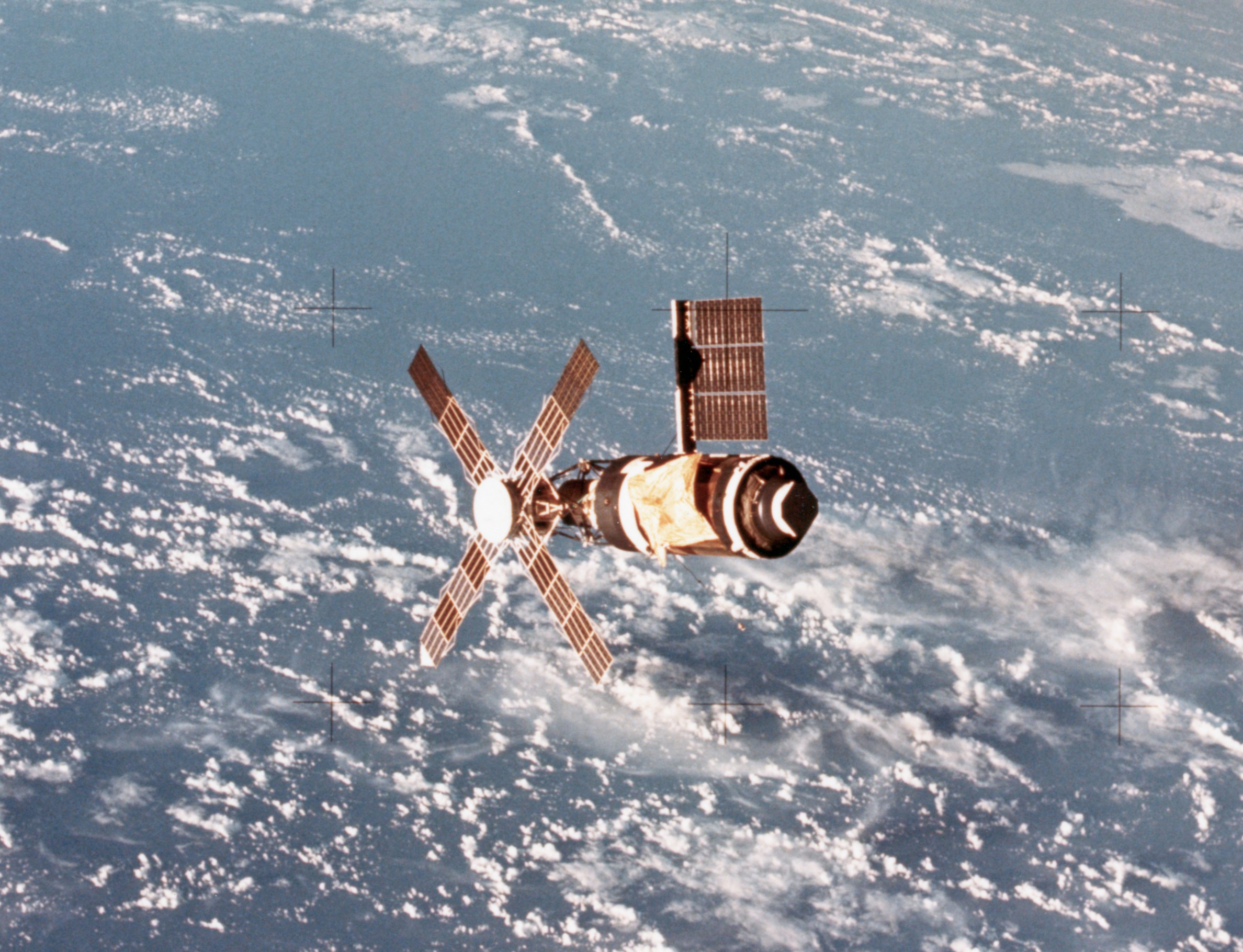It orbited Earth at 17,500 mph, almost four times the speed of a bullet. Then hit the Outback, lying pulverised and smouldering until some 90 minutes later when astonished mine workers found the blackened mass.
Believing it to be part of an alien craft, they summoned police to the remote mine site east of the town of Newman, deep inland on the fringes of West Australia’s vast desert.
The uncontrolled and unforeseen re-entry through Earth’s atmosphere early last Saturday of a large piece of space debris — later identified as a component from a Chinese-made Jielong rocket — is the latest in a string of fiery objects that have hit Australia from space.
The most famous came in mid-1979 when America’s Skylab space station — at 77 tonnes the largest object ever orbited at the time — tore through the atmosphere and disintegrated in a blaze of fire over the Indian Ocean.

Space debris was found in a mining site near Newman in West Australia
NASA

It showered tonnes of debris across the Great Australian Desert, one of the world’s most remote places. Though many witnessed Skylab’s spectacular disintegration, no people or property were harmed and the then US president, Jimmy Carter, apologised to Australians.
But Skylab’s re-entry over Australia had been widely anticipated, with multiple warnings issued — unlike Saturday’s sudden arrival of the Jielong rocket, which, when launched in September, towered 31m.

The Skylab space station
BETTMANN
“Normally you would have a fair bit of warning and uncontrolled re-entry,” Alice Gorman, an associate professor at Australia’s Flinders University, told The Times.
“In this case, what I’ve heard people say it was, it was probably very low, and people were tracking it, but then it sort of suddenly disappeared from view and that was when it got pulled back in [to earth’s atmosphere].
Therefore, nobody knew when — or where — it would come back, she added.
Gorman, whose research focuses on the archaeology and heritage of space exploration, and refers to herself as “Dr Space Junk”, was among the experts who identified Saturday’s arrival as most likely a propellant tank from the Chinese rocket.
Made of carbon fibre, Gorman suspects solid fuel remnants were still burning within the remains of the tank when the mineworkers came upon the estimated 300kg mass, lying in the middle of a dirt access road to their mine.
The re-entry of the Chinese rocket has focussed renewed attention on the growing amount of space debris orbiting the earth. The US government tracks about 23,000 pieces of debris larger than a softball (more than 10cm).
Debris, particularly near the International Space Station, orbits the Earth 15 to 16 times a day, increasing the risk of pieces colliding. The European Space Agency (ESA) estimates the total mass of all space objects in Earth orbit weighs more than 15,100 tonnes.
Of deep concern to Gorman and others is the sharp rise in the number of objects orbiting Earth; in the past three years there have been more objects launched into space than in the previous 65 years.
• Chris Hadfield: I’ll work with the King to tackle space junk
Elon Musk’s Starlink project — conducted by his SpaceX firm — has launched an unprecedented “mega-constellation” of satellites to provide internet access to much of the globe. Originally planning for 12,000 satellites, Starlink has since expanded its ambition to 42,000 satellites — five times the number of all objects humans had ever launched into space by rocket before this project.

A SpaceX rocket launched 28 Starlink satellites during a mission this week
JOE MARINO/UPI/SHUTTERSTOCK
“Rocket bodies are increasingly dangerous bits of debris and, generally, they can’t do a controlled re-entry. They don’t have communications, they don’t have guidance,” says Gorman. “They’re the most dangerous component of space junk in low Earth orbit, and the most uncontrollable.”
Another issue highlighted by Saturday’s incident, according to Gorman, is the thorny question of liability for damage or injury that might be caused by returning space debris.
“It’s possible that something could land and cause environmental harm,” she added. “A lot of rocket propellants are highly toxic, and a lot of rocket materials, or spacecraft materials, are highly toxic as well.”
Among the major contributors is China, whose space activities have raised serious concerns about its compliance with the Outer Space Treaty, which is the foundation of space law. It may only be a matter of time before a test case is brought.
“It would be really interesting, though it’s hardly ever happened, but a really interesting test case if Australia were to have to go to the Chinese government and say, ‘You owe us this much money to compensate for damages caused’,” Gorman said.

